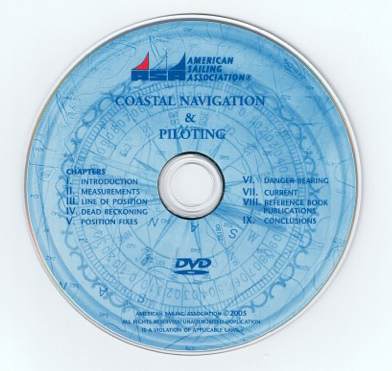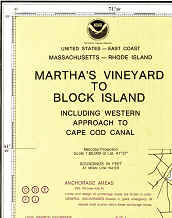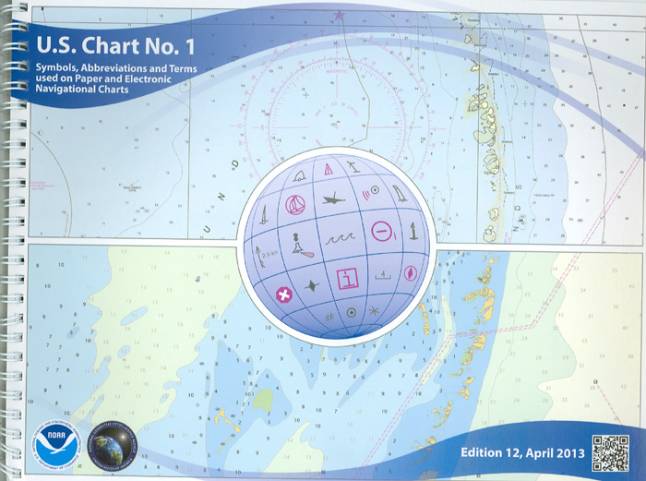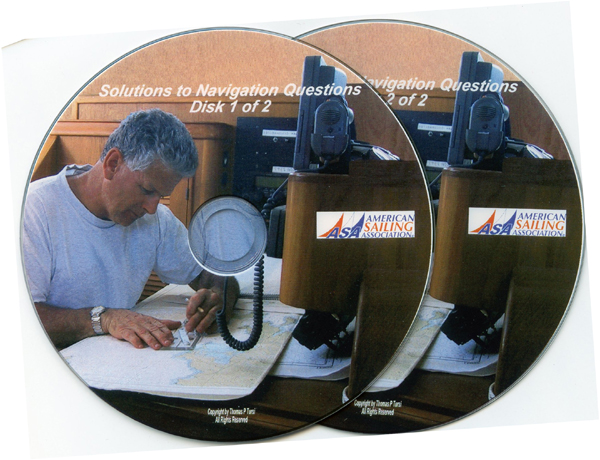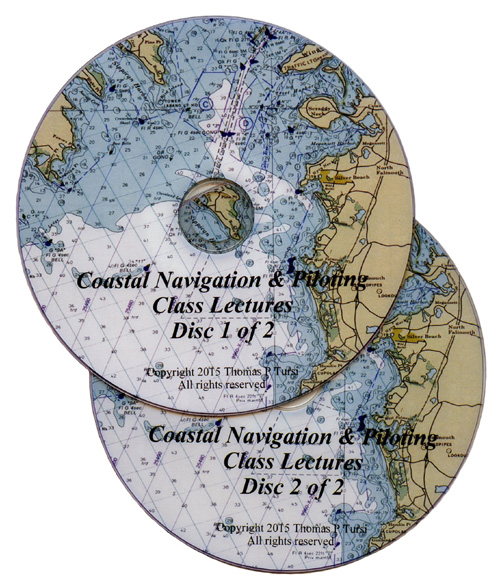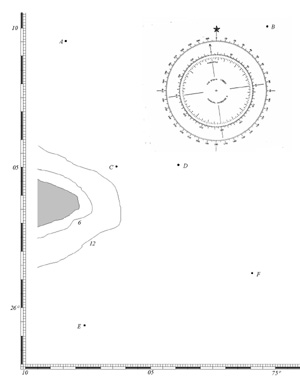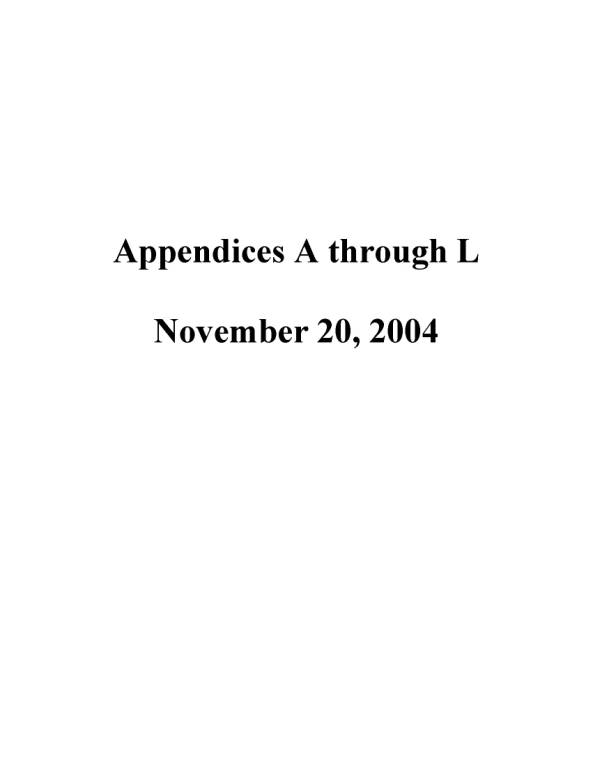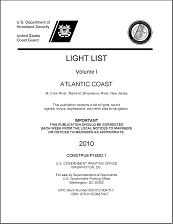Coastal Navigation & Piloting
ASA105 Course Materials
Basic Study Package
|
||||||||||||
Supplementary Items
|
||||||||||||
|
||||||||||||
Instructor Teaching Guide
by Tom Tursi
The
ASA105 Coastal Navigation Course uses the items shown
above.
Items
1 through 5 may be purchased from ASA or your local ASA School.
Students will need one copy of the 1210Tr chart during class to
complete homework assignments and a second copy when taking the ASA105
exam.
These
course books should be provided to students in advance of class to
permit study prior to coming to class. Ask students to read at least
Chapters 1 to 5 in the Coastal Navigation & Piloting text and to
attempt to do the homework in these chapters prior to class.
Items 6 through
10 may be downloaded by instructors and
students. I recommend that ASA Schools also provide Chart No 1 (item
7) in
printed book form to students as part of the course materials.
Students will require the following items to complete homework and practice exercises in the textbook:
-
Plotting tools such as parallel rules, dividers, triangle, simple calculator, pencils and eraser.
-
Small plotting sheets, item 6, which is downloadable and needed for chapter 4, 5, 6 and 7 assignments.
-
1210Tr Training Chart, item 5, for chapter 6, 10 and 13 assignments.
-
Chart No 1 (item 7) which is downloadable (or provided by ASA School) and needed for chapter 9 & 13 assignments.
The
Table of Contents of the textbook serves as a course outline. Chapters
1 to 8 constitute the bulk of the instructional material arranged in
the sequence normally presented in class.
Chapter
9 is assigned as homework and then reviewed in class.
Chapter
10 is an extra plotting exercise for students desiring additional,
advanced practice. I do not normally include this in the classroom
work.
Chapters
11 & 12 are reviewed briefly in class, and are not part of the
ASA105 written exam.
Chapter
13, which somewhat parallels the actual ASA examination, can be used
by students to test themselves when they think that they are ready to take the ASA105 written exam.
Appendix
M includes answers to all homework questions of the Coastal Navigation
& Piloting text, and the Solutions to Navigation Questions
book gives
step-by-step solutions to all of these questions. Also, the two-disc
DVD set, item 4, provides on-screen solutions to 16 of the key
problems in the course.
For
classroom instruction, I suggest that projection images be prepared
from the figures in the textbook. It's also helpful to hand-draw some
images on a flip chart during class to help students follow the more
difficult procedures.
Also,
show in class examples of actual items such as navigational charts,
plotting tools and publications. If extra copies of charts and pubs
are available, pass them around and make them available for student
perusal during class breaks.
Students
need adequate time between classroom sessions to do homework and
practical exercises. I suggest scheduling class day #1, followed by a
two-week gap, then class day #2, a two-week gap, and then class day
#3. These should be full 7-hour class days each.
I
suggest that instructors require students to hand in homework
assignments for review and coaching. Otherwise, some students fall
behind and hesitate to ask questions.
Day #4 is for final review of key topics, answering of last minute questions, and for the ASA105 written exam. I have found that student take from three to six hours to complete the exam, and instructors should plan the timing of this day to allow students adequate time to complete the exam. After grading the exams, instructors should critique each student on the results of the exam, whether this is done on the same day or at a later time.
Here is how I conduct the four-day course:
| Day 1 | Teach Chapters 1 to 5; review homework for Chapters 1 to 4 in class; assign Chapter 5 homework to do at home and submit before Day 2 for review |
| Day 2 | Review Chapter 5 homework; teach Chapter 6; assign Chapter 6 Practice Exercise questions 1 to 14 for in-class completion by students then review of these in class; teach Chapter 7; review Chapter 7 Homework questions 1 to 5 in class and assign questions 6 to 8 as homework and questions 9 & 10 as optional homework; review Chapter 8 and show actual publications; assign Chapter 9 homework for completion at home and Chapter 10 for optional completion at home. |
| Day 3 | Review Chapter 6, 7 & 9 homework; brief review of Chapters 11 & 12; answer any questions that students may have on Chapter 13 or any of the previous chapters. |
| Day 4 | Review key plotting techniques including TVMDC, Running Fix, Danger Bearing and Current Vectors; answer student questions on any topic of the course; begin exam by end of 1st hour of class; students hand in ASA exam booklet, 1210Tr plotting sheet and their calculation notes for review and grading by instructor. |
An
alterative to this schedule, is to hold six half-day sessions with
adequate time between for students to complete homework and practical
exercises, in addition to the final exam day as discussed above.
Instructor
preparation is important before teaching this course since there are
several items that may be unfamiliar to some; for example: the many
directional terms of Chapter 4, the light range discussion and running
fix procedures of Chapter 6, and the current vector discussions of
Chapter 7.
I've
tried to include in the text only those items that are
directly part of the navigation process using paper and pencil
techniques. There are some advanced concepts presented in Chapters 11
& 12 and also in Appendices B, J, K & L, and instructors
should feel at liberty to skip these entirely during classroom
instruction and suggest that interested students examine these on
their own.
I
welcome and encourage instructor feedback, comments and suggestions on
any aspect of these books in the interest of improving them and making
them more useful to both students and instructors.
Good
Sailing!
Tom Tursi
tomtursi@comcast.net
